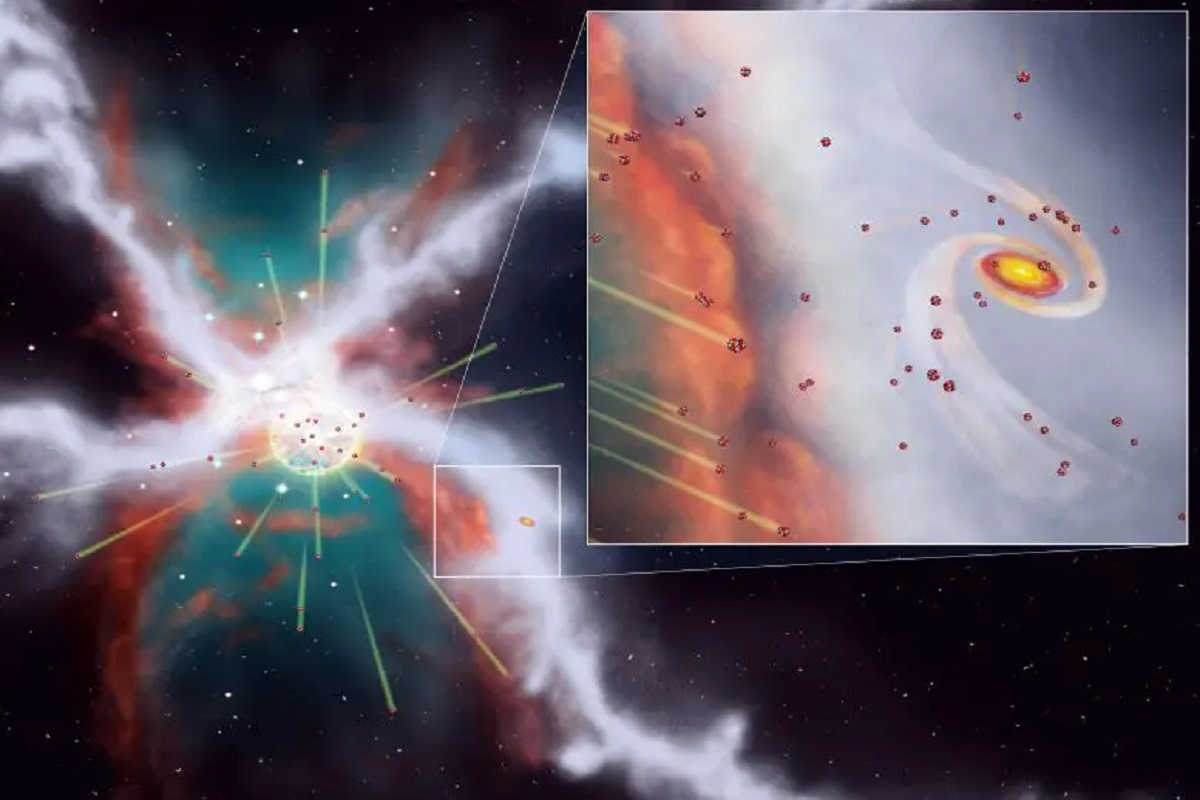New research suggests that our Solar System survived a nearby supernova explosion during its early formation. Scientists have studied meteorites and found evidence of isotopes that could only have come from a supernova. However, such an explosion could have been catastrophic for our young Solar System.

The study proposes that a filament of molecular gas, which surrounded the Sun during its formation, played a crucial role in protecting it from the destructive forces of the supernova. This filament acted as a shield, trapping the isotopes found in meteorites and preventing the blast wave from tearing apart the nascent Solar System.
Meteorites contain valuable information about the conditions during the birth of the Sun and planets. Researchers discovered that the concentration of a radioactive isotope of aluminum varied within these meteorites. This suggests that additional radioactive isotopes were introduced after the Solar System began forming, and a nearby supernova is the most likely source.
However, if a supernova was close enough to introduce the observed isotopes, its blast wave would have been powerful enough to destroy the young Solar System. The team led by Doris Arzoumanian from the National Astronomical Observatory of Japan proposed a new explanation. They theorized that the Sun formed along a dense molecular gas filament, while the supernova exploded at a nearby filament hub.
The team’s calculations indicated that the blast wave would have taken at least 300,000 years to break up the dense filament and reach the forming Solar System. The meteorite components enriched in radioactive isotopes formed within the first 100,000 years of the Solar System’s formation, inside the protective filament. This filament likely acted as a buffer, safeguarding the young Sun and capturing the radioactive isotopes from the supernova blast wave, channeling them into the growing Solar System.
These findings shed light on the early history of our Solar System and how it managed to survive a nearby supernova. The research highlights the importance of the environment in which stars form, and the role that molecular gas filaments can play in shielding developing star systems from potentially destructive events.
Thanks for reading: believenoborder.com
Leave a Reply